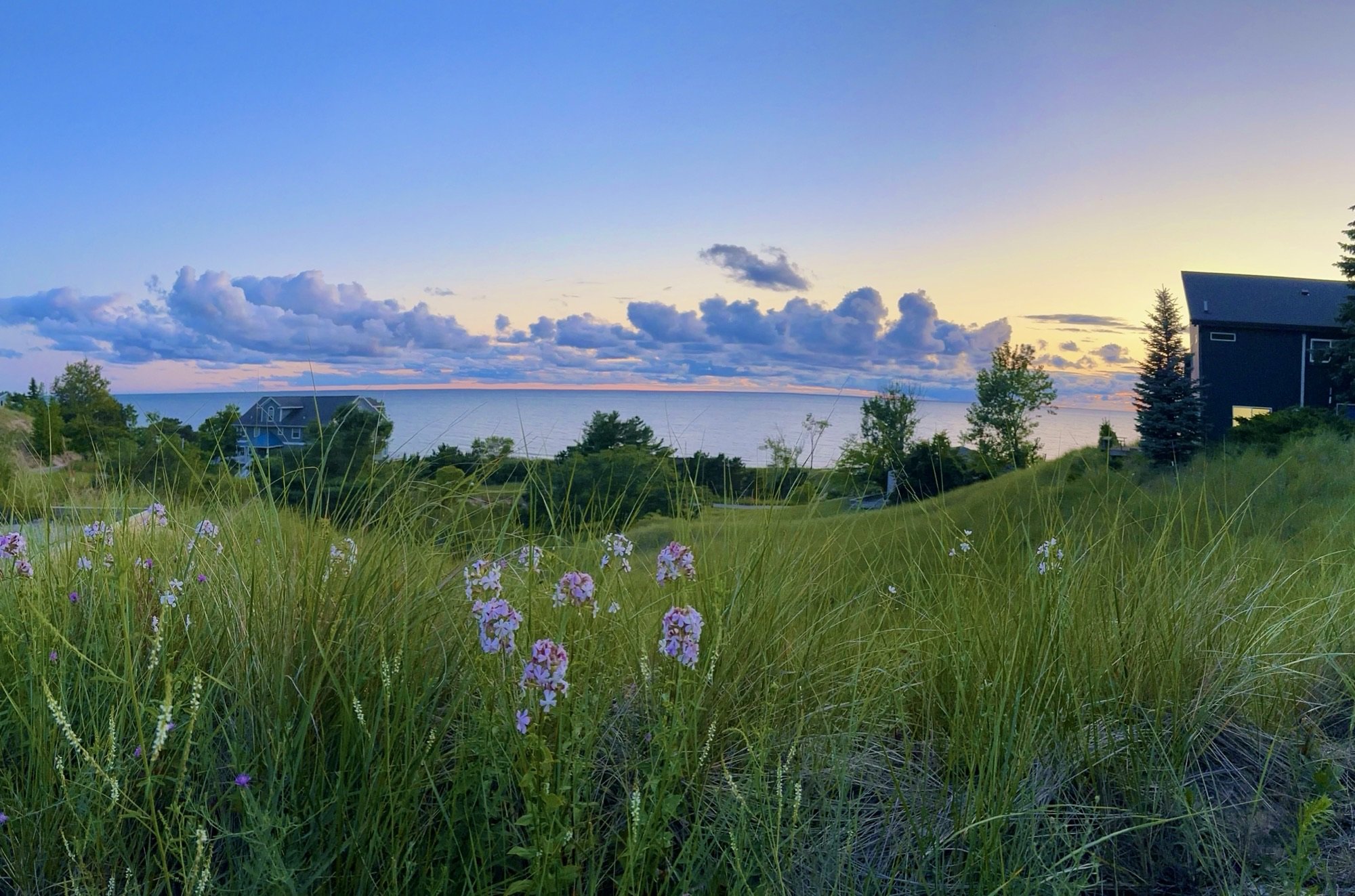
History of North Gray Dunes
A brief history of the Gray Dunes
The area now known as Gray dunes is located several miles north of the White Lake Channel and extends from Eilers Road to Fruitvale Road along the west coast of Lake Michigan. The half-mile of lakeshore north of Eilers Road was owned by the Gray family since 1906 and was first seen by Dirk Jellema in the late 1930s when he and his cousin Rod took a long summer hike from Holland to Ludington, MI. On that hike they “discovered” the summer home that belonged to the Gray family, who originally lived in Chicago but eventually split their time between their Lake Michigan cottage and Florida. During the 1940’s the Gray family spent less time summering at their family cottage which may have been in part because of a family tragedy. By the early 1950’s the cottage fell into disrepair to such an extent that some in the area even considered the cottage and property abandoned. In the late 50’s Dirk Jellema had a chance meeting with Tilbee Gray who happened to be in Montague at the time to pay property taxes.
This meeting eventually led to Dirk purchasing the Gray property which consisted of a ½ mile parcel along the beach from Eilers Road to just south of Lost Lake as well as two 40-acre parcels of “woods” offshore. Subsequently, Dirk acquired the remaining parcels of land along the shoreline north from Lost Lake up to and including the Lost Valley Lodge area. Development of the Gray Dunes area began in earnest during the 1960s, with most of the early cottages appearing by the end of that decade. Pepper’s trail was an old logging trail that was enhanced to provide access to the cottages, and was named Pepper’s trail after the Jellema family dog Pepper. Dirk loved jazz and promoted jazz bands at the Lost Valley Lodge during the late 1960s and 1970s. Bix Trail and Morton Trail are named after Dirk’s favorite jazz musicians. In the early 1980’s Gray Dunes North was established and separated from Gray Dunes (or South Gray Dunes) such that the cottages and homes accessed via Fruitvale Road and Pepper’s Trail are considered North Gray Dunes while those accessed from Eilers Road via Sea Biscuit Lane are Gray Dunes, or South Gray Dunes. Lost Valley is accessed by the road that branches north at the end of Fruitvale Road.
The beautiful area of North Gray Dunes was made possible by the vision of Dirk Jellema. He aspired to create an artist intelligentsia retreat where a community of people could interact around the lake and the dunes. Dirk was born in 1924 and was about 15 years old when he took the hike that led to his discovery of the Gray farmhouse. Dirk left Calvin College in his sophomore year to enlist in the Army Air Corps and served during World War Two from 1943- 1946. After obtaining a PhD he returned in 1961 to Calvin College’s history department. After purchasing the property from Mr. Gray and the additional property north including the Lost Valley area, Dirk started a real estate company named Admiral Tromp. Additional properties were acquired, but high water levels in Lake Michigan in the late 1970’s led to financial difficulties for the company, which were exacerbated by a lower than expected payment for property the company owned near the Sleeping Bear Dunes area north of Frankfort, Michigan. Following these losses Dirk left real estate, but his legacy lives on along the shores of Lake Michigan. Dirk remained single and often worked together with his father, Dr. William Jellema. Both men had an interest in religion, philosophy, and history. Dirk died of a heart attack July 12, 1982, at the age of 59 at his cottage in Gray Dunes, only two months after his father passed away, May 16, 1982, at 89 years of age.

